How I Built My Strava Dashboard 🚴♂️
July 17, 2025
How I Built My Strava Dashboard 📈
This project started as a way to visualize my endurance training data from Strava — running, cycling, swimming, and more — in a personalized, privacy-respecting dashboard. I wanted an app that not only pulled in activity data, but also gave meaningful breakdowns like distance over time, summaries by activity type, and weekly/monthly stats.
What began as a simple integration experiment became a full-stack project that taught me a lot about OAuth flows, API rate limits, PostgreSQL data modeling, and React performance optimization.
🛠️ Why I Built It
As an athlete, I enjoy tracking my training but found Strava’s default dashboard too rigid. I wanted:
- A cleaner view of weekly and monthly summaries
- A breakdown by activity type
- A timeline view to monitor consistency
- Full control over how and where my data lives
- And of course, I wanted to build it myself.
🔐 OAuth 2.0 + Strava API
Getting started meant registering a Strava app and setting up the OAuth 2.0 authorization flow. After authentication, the app exchanges a code for a short-lived access token and refresh token.
The backend is responsible for:
- Persisting tokens securely in PostgreSQL
- Automatically refreshing expired tokens
- Making authenticated requests to fetch
/athlete/activities
Despite reading the Strava API docs thoroughly, getting this OAuth flow to work in production was far more finicky than expected. I hit several walls:
- Scope strings had to be space-separated (
read activity:read), not comma-separated. - Tokens would sometimes work locally, but fail in Railway deployments.
- Strava errors are often opaque (
code: "invalid"with no deeper reason). - I had to deploy dozens of backend variations just to log the failure reasons.
📉 Here's what debugging that looked like:

🧰 Key Stack Choices
- Node.js + Express – REST API and OAuth token handling
- PostgreSQL – Data storage via Railway
- React + Vite – Fast and modern frontend
- Vercel – Frontend hosting + GitHub CI/CD
- dotenv – Multi-environment secrets
- CORS + Proxying – For seamless frontend-backend communication
⚙️ Backend Architecture
The backend has two major roles:
- Handle OAuth authorization and token management at
/auth - Serve activity data via
/api/activities, filtered by type or date
Tokens are stored securely in the DB and automatically refreshed. Data is fetched from Strava’s API, transformed, and sent to the frontend.
Sample route:
GET /api/activities?type=ride💻 Frontend UX
The React frontend dashboard provides summaries, filters, and a distance chart.
Features
- Filter by activity type (Run, Ride, Swim, etc.)
- Weekly and monthly summaries
- Activity list with toggleable maps
- Distance over time chart
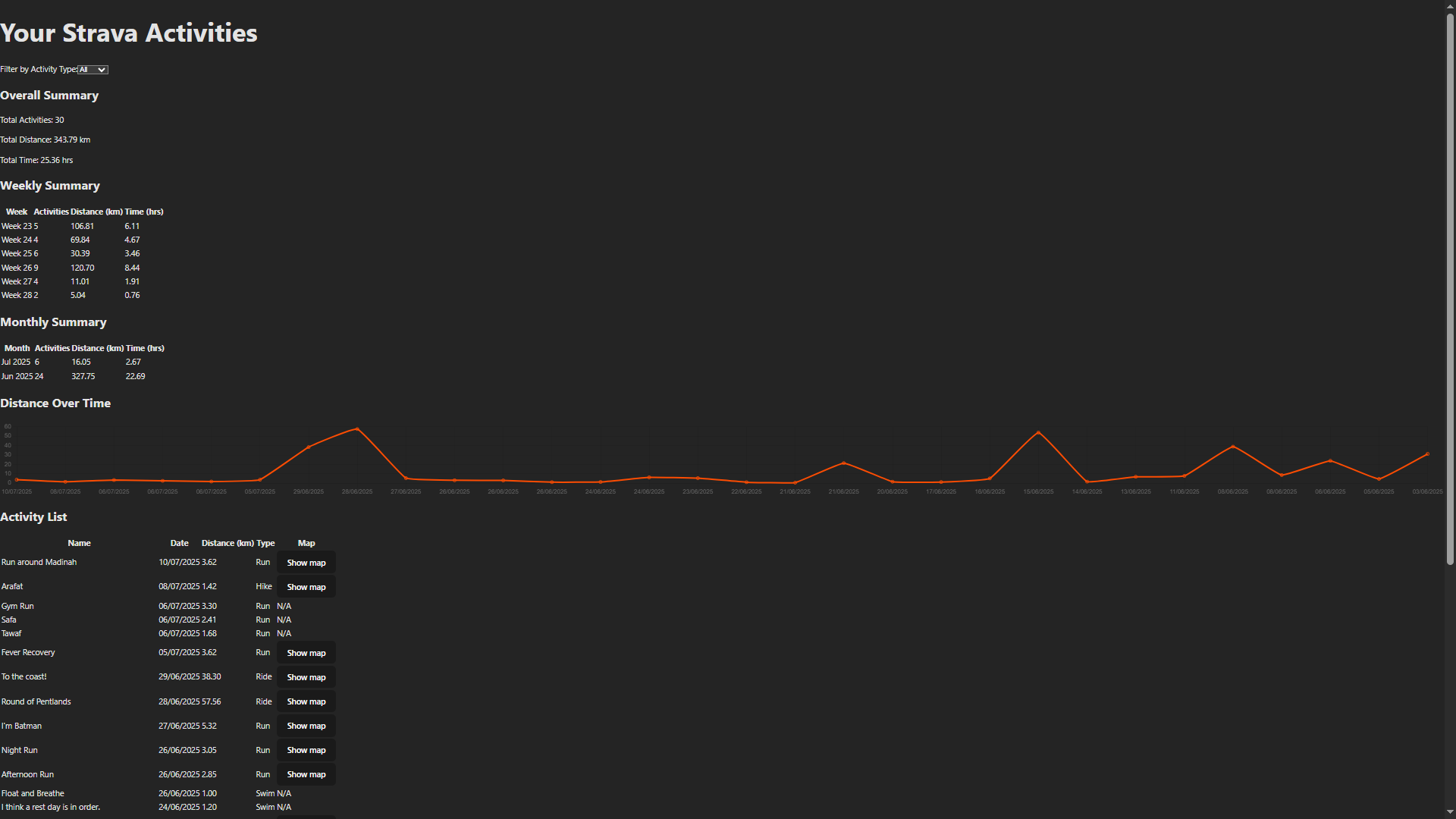
Filtered Views
You can filter your activities by type using a simple dropdown menu.
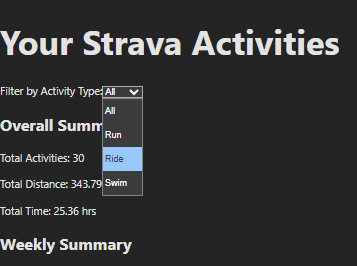
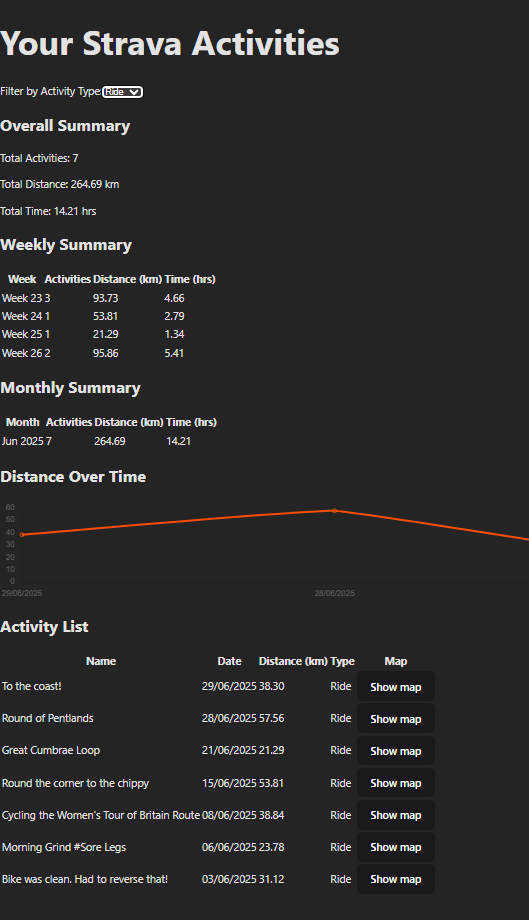
Interactive Maps per Activity
Each activity entry includes a "Show map" button powered by Leaflet, displaying the GPS route from Strava.
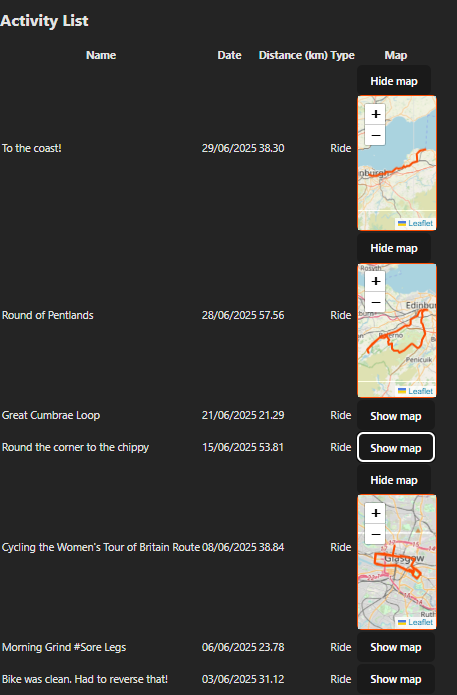
🧪 Local & Prod Environments
Environment variables are managed via .env and .env.production files. This allows the frontend to use local APIs in development and the deployed backend in production.
# .env
VITE_API_BASE=http://localhost:5000
# .env.production
VITE_API_BASE=https://strava-dashboard-production.up.railway.appThe backend is hosted on Railway, and the frontend on Vercel, with automatic deployments triggered by GitHub pushes.
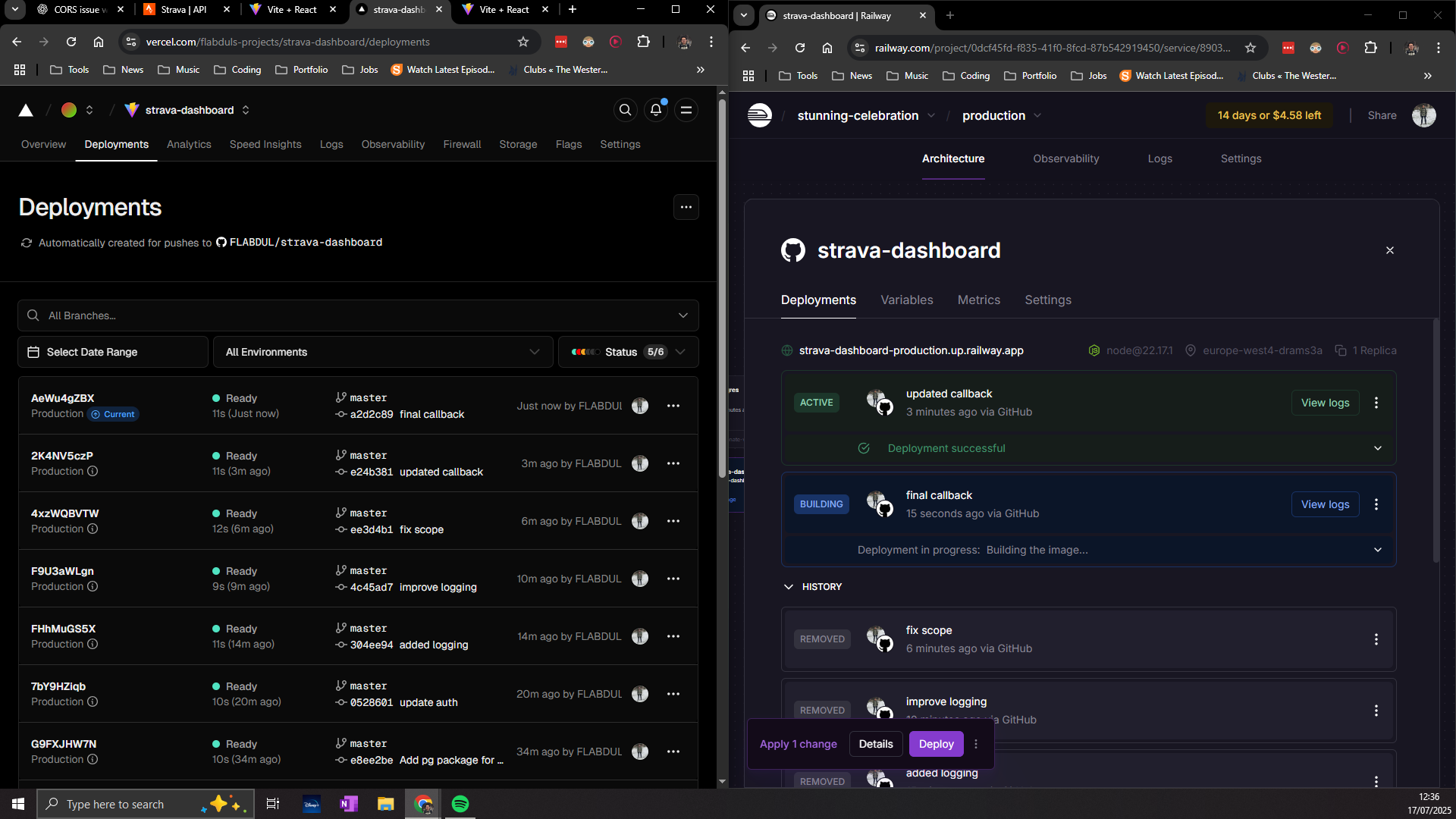
🔐 Strava Dev Portal View
Here’s a peek at how the app is configured on the Strava API Developer Portal, including rate limits and token access:
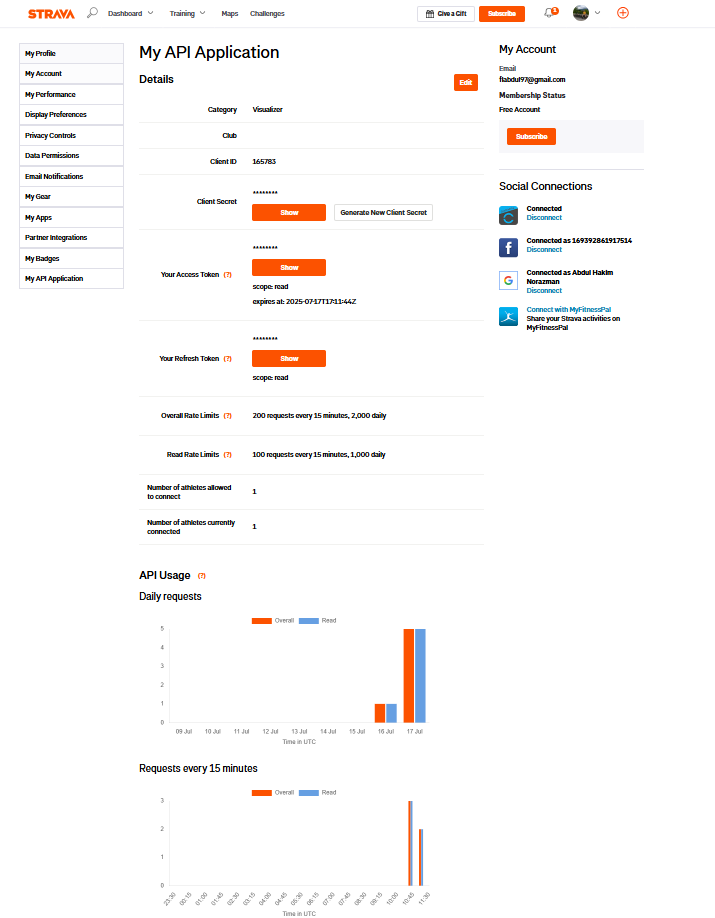
🧩 What’s Next?
- Add charts using
rechartsorchart.js - Let users set personal goals and track progress
- Add a light/dark mode toggle
- Improve activity search and tagging
- UI polish and accessibility improvements
💡 Reflections
This dashboard became a true full-stack workout — pun intended. Here’s what I learned:
- Strava’s OAuth flow is fragile in production and requires very precise config
- Observability and logging are critical when something “just doesn’t work”
- Managing tokens (expiry, refresh, DB persistence) is non-trivial
- CORS and environment setup need care across Railway and Vercel
- Logs are gold when debugging anything OAuth-related
Even with the OAuth bugs, the core dashboard works beautifully once tokens are seeded manually — and seeing my training history visualized like this is incredibly satisfying.
✅ Live Demo
🌍 strava-dashboard-zeta.vercel.app
💻 github.com/yourname/strava-dashboard
Thanks for reading! Feel free to fork or contribute — especially if you’ve fought the same OAuth battles 🙃